- You cannot add "Inside Out: The True Story Of The Simmonds-Newcombe Gaol Escape: Les Newcombe" to the cart because the product is out of stock.
-
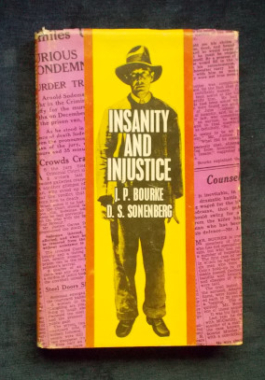 The case of Arnold Karl Soderman is one of the most remarkable in the criminal annals of 20th century Australia. No matter what angle - legal, medical or from the layman's point of view - it presents startling drama and raises challenging questions. The macabre story of the killing of four young children, one only six years old; the tragedy of two men charged with the crimes of which they were guiltless; the situation of a father confronted with an unfounded allegation of the ferocious murder of his daughter; the spectacle of honest witnesses mistakenly testifying as to the identity of an accused man so as to bring the object of their accusations within the shadow of the gallows; the fight for the life of the killer through the hierarchy of the Australian Court System up to the Privy Council; the decision to hang the accused, declared by two government doctor and another highly qualified psychiatrist to have been insane at the time of the killings; and the carrying out of the sentence all combine to make a story which calls for the telling. Co-author J.P. Bourke was Counsel for the Defence in this case 1935-1936
The case of Arnold Karl Soderman is one of the most remarkable in the criminal annals of 20th century Australia. No matter what angle - legal, medical or from the layman's point of view - it presents startling drama and raises challenging questions. The macabre story of the killing of four young children, one only six years old; the tragedy of two men charged with the crimes of which they were guiltless; the situation of a father confronted with an unfounded allegation of the ferocious murder of his daughter; the spectacle of honest witnesses mistakenly testifying as to the identity of an accused man so as to bring the object of their accusations within the shadow of the gallows; the fight for the life of the killer through the hierarchy of the Australian Court System up to the Privy Council; the decision to hang the accused, declared by two government doctor and another highly qualified psychiatrist to have been insane at the time of the killings; and the carrying out of the sentence all combine to make a story which calls for the telling. Co-author J.P. Bourke was Counsel for the Defence in this case 1935-1936 -
 On April 4th, 1968, Dr. Martin Luther King, Jr. stepped out onto the balcony of the Lorraine Motel in Memphis, Tennessee, and into his killer's line of fire. One shot ended Dr. King's life and forever changed the course of American history - setting into motion a massive cover-up that has withstood a quarter-century of scrutiny. Now, after 18 years of intensive investigation, William F. Pepper tears away the veil of subterfuge that has hidden the truth of King's death - proving the innocence of convicted assassin James Earl Rayand revealing the cabal of government leaders and organised crime figures that masterminded the assassination of one of the most influential leaders of our age. The author was an associate of Dr. King and executive director of the independent political coalition that hoped to put King forward as a third party presidential candidate in 1968. After the murder, Pepper walked away from politics. But in 1977. Reverend Ralph Abernathy asked Pepper to interview James Earl Ray. Initially sceptical, Pepper became convinced that Ray was innocent of the crime and that Ray had always claimed, he had been manipulated by a man named Raul and was the victim of a set-up. But who was behind the set-up - and why?
On April 4th, 1968, Dr. Martin Luther King, Jr. stepped out onto the balcony of the Lorraine Motel in Memphis, Tennessee, and into his killer's line of fire. One shot ended Dr. King's life and forever changed the course of American history - setting into motion a massive cover-up that has withstood a quarter-century of scrutiny. Now, after 18 years of intensive investigation, William F. Pepper tears away the veil of subterfuge that has hidden the truth of King's death - proving the innocence of convicted assassin James Earl Rayand revealing the cabal of government leaders and organised crime figures that masterminded the assassination of one of the most influential leaders of our age. The author was an associate of Dr. King and executive director of the independent political coalition that hoped to put King forward as a third party presidential candidate in 1968. After the murder, Pepper walked away from politics. But in 1977. Reverend Ralph Abernathy asked Pepper to interview James Earl Ray. Initially sceptical, Pepper became convinced that Ray was innocent of the crime and that Ray had always claimed, he had been manipulated by a man named Raul and was the victim of a set-up. But who was behind the set-up - and why? -
 Ron Williamson was a star college sportsman in the small town of Ada, Oklahoma. When he left to pursue his dreams he seemed destined for glory. But years of injury, drinking, drugs and women took their toll, and he returned to Ada a lonely drifter. Soon after his homecoming, a local cocktail waitress was raped and murdered. With no immediate leads, the police worked the case for five years before arresting Williamson and charging him with her murder. Despite no physical evidence, and based largely on the testimony of jailhouse snitches, he was found guilty at trial and sent to death row. Left to await his fate, Williamson was the only person to know the terrible truth: that an innocent man had been sent on a journey to hell. A journey from which he might never return...Illustrated with black and white photographs.
Ron Williamson was a star college sportsman in the small town of Ada, Oklahoma. When he left to pursue his dreams he seemed destined for glory. But years of injury, drinking, drugs and women took their toll, and he returned to Ada a lonely drifter. Soon after his homecoming, a local cocktail waitress was raped and murdered. With no immediate leads, the police worked the case for five years before arresting Williamson and charging him with her murder. Despite no physical evidence, and based largely on the testimony of jailhouse snitches, he was found guilty at trial and sent to death row. Left to await his fate, Williamson was the only person to know the terrible truth: that an innocent man had been sent on a journey to hell. A journey from which he might never return...Illustrated with black and white photographs. -
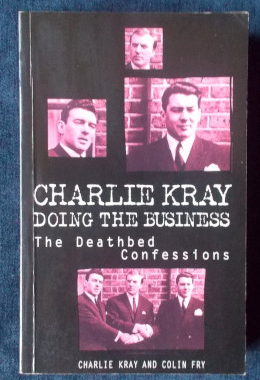 Until the release of this book, no-one had ever revealed the truth about the Krays. Gossip and rumour have been rife, fact has blended into fiction. Only one man knew everything about the fearsome twins, but the law of the streets dictated that he kept it all a secret. Before his death. Charlie Kray revealed everything to his co-writer Colin Fry. He wanted to set the record straight once and for all. He made his deathbed confessions, revealing the in credible truth about the Kray Firm. Mixing their peculiar blend of glamour and terrifying violence, this is the final great story of the Krays - told by the man who knew them best. Illustrated with black and white photographs. https://cosmiccauldronbooks.com.au/p/frances-kray-tragic-bride-jacky-hyams/
Until the release of this book, no-one had ever revealed the truth about the Krays. Gossip and rumour have been rife, fact has blended into fiction. Only one man knew everything about the fearsome twins, but the law of the streets dictated that he kept it all a secret. Before his death. Charlie Kray revealed everything to his co-writer Colin Fry. He wanted to set the record straight once and for all. He made his deathbed confessions, revealing the in credible truth about the Kray Firm. Mixing their peculiar blend of glamour and terrifying violence, this is the final great story of the Krays - told by the man who knew them best. Illustrated with black and white photographs. https://cosmiccauldronbooks.com.au/p/frances-kray-tragic-bride-jacky-hyams/ -
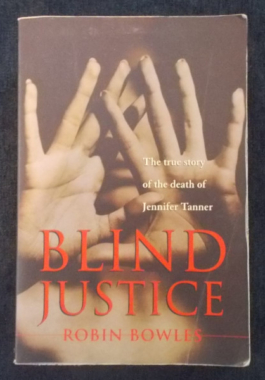 In 1996 Robin Bowles, a Melbourne company director, read a newspaper report about a task force that had been set up to re-investigate the circumstances surrounding the alleged suicide of Victorian country housewife Jennifer Tanner.The reason for the renewed interest was the the discovery of human remains in a mineshaft near the property where Jenny had died. Deeply puzzled by the mass of anomalies in the case, Robin went searching for answers. How, for instance, could Jenny have shot herself twice in the brain- after shooting both her hands first? Since there was no note nor proof of intention, could the findings from the original post-mortem have been influenced by other parties? And was Jenny's death connected to the body in the mine? What unfolds is a bizarre tangle of police bungles, cover-ups and family intrigue.
In 1996 Robin Bowles, a Melbourne company director, read a newspaper report about a task force that had been set up to re-investigate the circumstances surrounding the alleged suicide of Victorian country housewife Jennifer Tanner.The reason for the renewed interest was the the discovery of human remains in a mineshaft near the property where Jenny had died. Deeply puzzled by the mass of anomalies in the case, Robin went searching for answers. How, for instance, could Jenny have shot herself twice in the brain- after shooting both her hands first? Since there was no note nor proof of intention, could the findings from the original post-mortem have been influenced by other parties? And was Jenny's death connected to the body in the mine? What unfolds is a bizarre tangle of police bungles, cover-ups and family intrigue. -
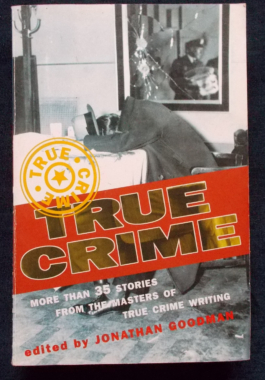 More than 35 accounts of notorious cases and lurid curiosities from the history of crime, described by criminology's most distinguished authors. In this volume: The murder of John Lennon; The rise and fall of Al Capone; The pathologist's account in the Nilsen case; Damon Runyan at a gangster's trial; Edgar Wallace at the scene of a crime; Abraham Lincoln's assassination; A hanging judge's diary; the death of Jesse James; The guillotining of Henri Landru; Jack the Ripper's real identity; W.M. Thackery: On Going To A Hanging; James Turber on a Broadway Gambler's demise; Edmund Pearson's Notes For Murderesses; the first electrocution at Sing Sing - and more.
More than 35 accounts of notorious cases and lurid curiosities from the history of crime, described by criminology's most distinguished authors. In this volume: The murder of John Lennon; The rise and fall of Al Capone; The pathologist's account in the Nilsen case; Damon Runyan at a gangster's trial; Edgar Wallace at the scene of a crime; Abraham Lincoln's assassination; A hanging judge's diary; the death of Jesse James; The guillotining of Henri Landru; Jack the Ripper's real identity; W.M. Thackery: On Going To A Hanging; James Turber on a Broadway Gambler's demise; Edmund Pearson's Notes For Murderesses; the first electrocution at Sing Sing - and more. -
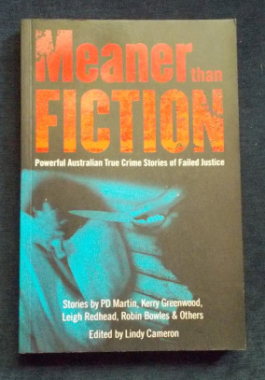 Just where is justice in Australia hiding? This brilliant new collection of true crime stories takes us into the Australian courts of the 1980s and '90s, back in time to the goldfields of the 1860s, and out to the island nation of Nauru in 2006 to explore how the scales of justice are unbalanced. This is a world in which the innocent still get locked up and the guilty too often go free. This collection is a must for all lovers of true crime. It will shock, outrage and intrigue. Features: Robin Bowles charts a mysterious case of sudden death; Lindy Cameron on the random shooting of Dr Andrew Taylor; Kathryn Deans on Heather Osland and how 13 years of torture was just the start of her ordeal; Liz Filleul on the disappearance of Elisabeth Membrey; Kerry Greenwood examines the role that crime writers have played in redressing miscarriages of justice; PD Martin on the Innocence Project, and Andrew Mallard; Susan Metcalfe on the tragedy of two Iraqis left behind on Nauru; Leigh Redhead asks how a man who secretly filmed his flatmates got away with it; Shelley Robertson, a modern forensic pathologist, questions the 'whole truth' of expert testimony; and Lucy Sussex on the unfortunate author Mary Fortune.
Just where is justice in Australia hiding? This brilliant new collection of true crime stories takes us into the Australian courts of the 1980s and '90s, back in time to the goldfields of the 1860s, and out to the island nation of Nauru in 2006 to explore how the scales of justice are unbalanced. This is a world in which the innocent still get locked up and the guilty too often go free. This collection is a must for all lovers of true crime. It will shock, outrage and intrigue. Features: Robin Bowles charts a mysterious case of sudden death; Lindy Cameron on the random shooting of Dr Andrew Taylor; Kathryn Deans on Heather Osland and how 13 years of torture was just the start of her ordeal; Liz Filleul on the disappearance of Elisabeth Membrey; Kerry Greenwood examines the role that crime writers have played in redressing miscarriages of justice; PD Martin on the Innocence Project, and Andrew Mallard; Susan Metcalfe on the tragedy of two Iraqis left behind on Nauru; Leigh Redhead asks how a man who secretly filmed his flatmates got away with it; Shelley Robertson, a modern forensic pathologist, questions the 'whole truth' of expert testimony; and Lucy Sussex on the unfortunate author Mary Fortune. -
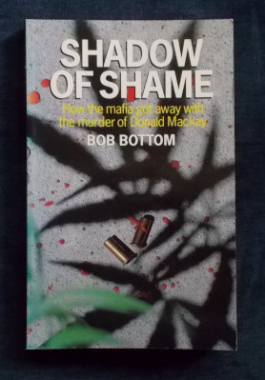
Shadow Of Shame: Bob Bottom
$12.00Donald Bruce MacKay, the Griffith anti-drugs campaigner, disappeared without trace from the carpark of the Griffith Hotel in July 1977. Mackay had been a secret informant for polce against illicit growing of marijuana growing in the Riverina area. His ‘disappearance’ became Australia’s first political assassination. This is the shocking story of how the mafia planned and executed his murder. Throughout the shameful decade that followed, some people, even at senior levels of politics and law enforcement, connived to cover up this mafia murder. Bob Bottom, a crime journalist, traces the birth and growth of the mafia in Griffith, known to police as a centre for serious crime as early as the 1930s. By the 1970s, when Mackay first became concerned about illicit drug activities in his town, those controlling organised crime had become far more sophisticated. Bribery, corruption and pay-offs had become commonplace. Serious questions about NSW police investigations into Australia’s most notorious murder precipitated a special commission of enquiry – nine years later...Bottom also details how drug boss Robert Trimbole lived safely in Spain despite international police knowledge of his whereabouts and of the failure of Australian authorities to bring him to justice. Illustrated with black and white photographs.



